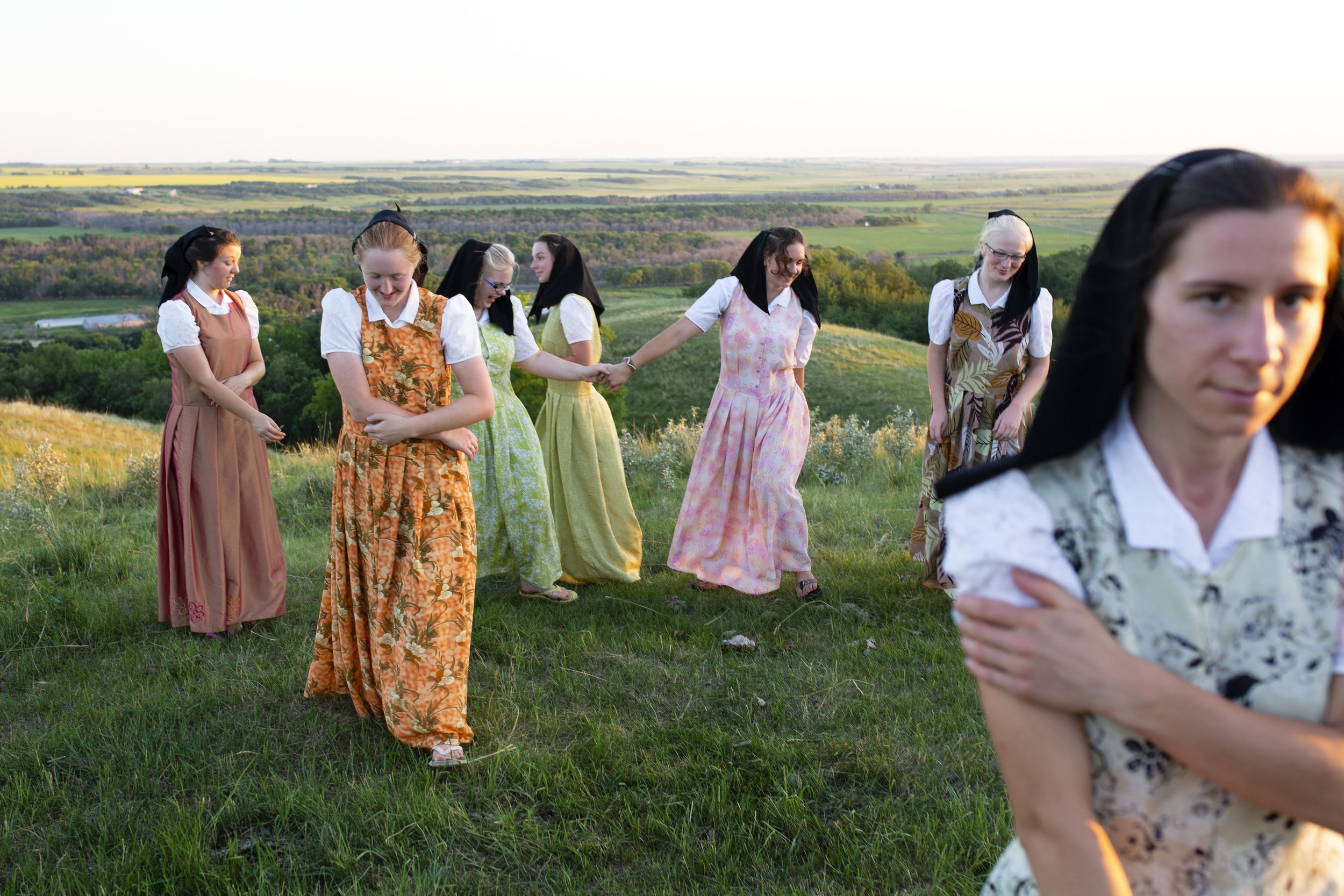Tim Smith
Tim Smith is a documentary photographer based in Brandon, Manitova. He presents an exhibition based on on his work photographing the insular, communal Hutterites of North America over the past fifteen years. What began as a simple encounter with members of Deerboine Hutterite Colony in the spring of 2009 has grown into a multi-layer long-term documentation of Hutterite culture. The Hutterites, communal anabaptists, immigrated to Canada from the United States in the early 1900’s, following centuries of upheaval and migration through Europe beginning in the Tyrol region of Austria. The past century in Canada and the United States has been one of the most peaceful and successful periods of their history, yet brings its own challenges to their culture. His work has been supported by several grants and has been exhibited throughout North America, Europe, Asia, The Middle East, Australia and Africa. Recent exhibitions include the 2023 Xposure International Photo Festival in the United Arab Emirates, Freelens Gallery in Hamburg and FotoForum Innsbruck. The project was also chosen for the 2022 DongGang International Photo Festival - Artist of the Year solo exhibition. In addition to exhibiting, excerpts from my Hutterite work have been published widely in print and online. This body of work represents one of the longest and broadest photographic documentations of the Hutterites ever produced.

In The World But Not Of It
(Nel mondo ma non di lui)
"Some people are obsessed with sophisticated and futuristic cityscape like New York, but (Smith) is the exact opposite” - Kim Chang Gil
Beginning with a chance encounter, Tim Smith has been documenting and building relationships with Hutterite communities in North America over the past fifteen years. An Anabaptist group whose roots trace back to Tyrol, Austria in the wake of the 16th century Radical Reformation, Hutterites live communally on colonies throughout western Canada and the north-western United States. Their culture continues to be preserved through deliberate separation from mainstream society and economic self- sufficiency. The Hutterites are currently in the midst of one of the most successful periods of their approximately 500 year history. Facing no overt threats from the outside world they have prospered and their population has grown to approximately 50,000. Members are provided for throughout their entire lives and on the whole experience less of the loneliness and isolation prevalent in the modern world. The importance given to engagement in family life, social life and spirituality, and the defined purpose for their lives means Hutterite communities meet many of the requirements to be considered Blue Zones; area’s where health, happiness and life expectancy rates are higher than average.
However, this period of peace has its challenges as well. There are concerns amongst colony leaders that too much prosperity is eating away at the fabric of their society and too much contact with the outside world is watering down their culture. Each colony must decide how rigidly they cling to their traditions verses how much they adapt to the increasingly connected outside world. Conformity to the larger group is unofficially policed by the group as a whole. The Minister is burdened with ensuring the colony stays on a path to godliness rather than worldliness. As Hutterite author Paul S. Gross wrote “We cannot please the world and God at the same time... Either we take this world with all it offers, including trouble, mental stress, sorrow, and death at the end; or else we take a better way.” Despite challenges the Hutterites continue to be the most successful model for communal living in modern western history. Hutterites are often either romanticized or denigrated as simple, backwards, quaint and/or old fashioned. The reality is that their society is very complex. Smith uses photography to document the breadth and complexity of the Hutterite experience as well as to show how colonies navigate the need to respond to the external pressures of the world around them while holding on to key traditions central to their faith. Smith’s photographs provide a contemporary and nuanced view of the Hutterite colonies - delving into complex decisions at the heart of the everyday. They offer a glimpse into the continuously negotiated sites of Hutterite life. Many of the images focus on the youth culture in the colonies, where expressions of rebellion, respect for tradition, and maintenance of strict gender roles all create a sense of dual resistance - at once against the pressures of the outside world and against tradition. Having devoted fourteen years to this ongoing documentation, Smith’s understanding of the Hutterite communities creates a possibility of showing their complexity in ways that are responsive to how they wish to be seen.
Tim Smith

